
Danaus genutia, the common tiger, is one of the common butterflies of India. It belongs to the "crows and tigers", that is, the Danainae group of the brush-footed butterflies family. The butterfly is also called striped tiger in India to differentiate it from the equally common plain tiger, Danaus chrysippus. The species was first described by Pieter Cramer in 1779.
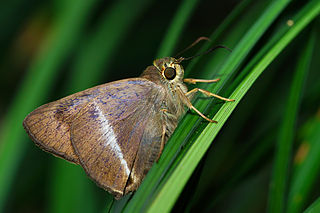
Hasora taminatus, the white banded awl, is a butterfly belonging to the family Hesperiidae, which is found in Asia.
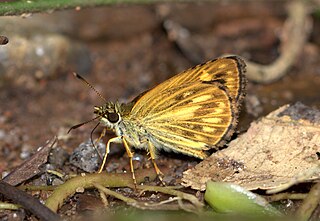
Baracus vittatus, the hedge-hopper, is a butterfly belonging to the family Hesperiidae. It is found in India and Sri Lanka.
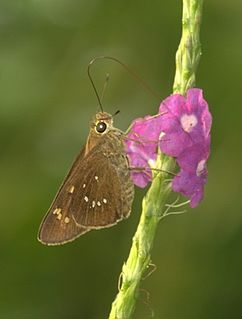
Pelopidas conjuncta, the conjoined swift, is a butterfly belonging to the family Hesperiidae found in India.
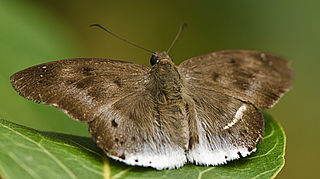
Tagiades japetus, commonly known as the pied flat or the common snow flat, is a species of spread-winged skipper butterfly belonging to the family Hesperiidae. It is widely distributed, being found from India, the Himalayas, Southeast Asia, to Australia. It contains twenty-four recognized subspecies.

Pachliopta aristolochiae, the common rose, is a swallowtail butterfly belonging to the genus Pachliopta, the roses, or red-bodied swallowtails. It is a common butterfly which is extensively distributed across south and southeast Asia.

Discolampa ethion, the banded blue Pierrot, is a contrastingly marked butterfly found in South Asia that belongs to the blues or family Lycaenidae. The species was first described by John O. Westwood in 1851.

Spalgis epius, the apefly, is a small butterfly found in the Indomalayan realm that belongs to the lycaenids or blues family. It gets its name from the supposed resemblance of its pupa to the face of an ape.

Neopithecops zalmora, the Quaker, is a small butterfly found in South Asia and Southeast Asia that belongs to the lycaenids or blues family.
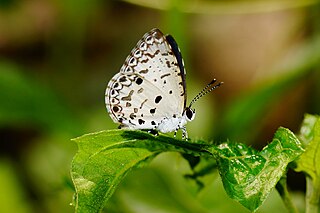
Megisba malaya, the Malayan, is a small butterfly found in South Asia and Southeast Asia. It belongs to the family of gossamer-winged butterflies (Lycaenidae). The species was first described by Thomas Horsfield in 1928.
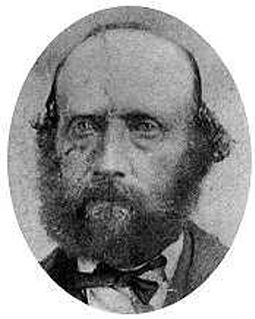
Charles Thomas Bingham was an Irish military officer and entomologist.

Acytolepis puspa, the common hedge blue, is a small butterfly found in Cambodia, India, Myanmar, Thailand, Yunnan, Taiwan, Sri Lanka, Philippines, Borneo and New Guinea that belongs to the lycaenids or blues family. The species was first described by Thomas Horsfield in 1828.

Prosotas nora, the common lineblue, is a species of lycaenid butterfly found in Asia to Australia. The species was first described by Rudolf Felder in 1860.

Nacaduba berenice, the rounded six-line blue, is a lycaenid butterfly found in Indomalayan realm. The species was first described by Gottlieb August Wilhelm Herrich-Schäffer in 1869.
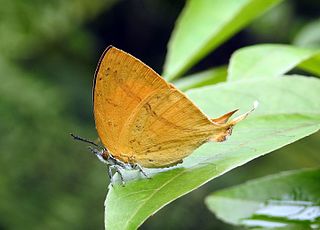
Loxura atymnus, the yamfly, is a species of lycaenid or blue butterfly found in Asia.

Zizeeria karsandra, the dark grass blue, is a small butterfly first described by Frederic Moore in 1865. It is found from the southern Mediterranean, in a broad band to India, Sri Lanka, the Andaman and Nicobar islands, Myanmar, Thailand, Malaysia, Yunnan, Indonesia, the Philippines, Arabia, United Arab Emirates, Saudi Arabia and Oman, New Guinea and northern and eastern Australia. It belongs to the lycaenids or blues family, and the tribe Polyommatini.
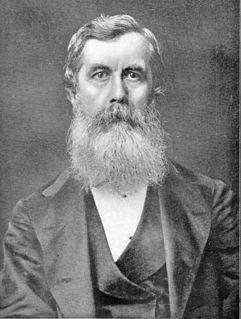
Frederic Moore FZS was a British entomologist. He was also an illustrator and produced six volumes of Lepidoptera Indica and a catalogue of the birds in the collection of the East India Company.
James Cecil Mottram was a British physician and naturalist. He conducted studies on cancer, conducted experiments on mutation induction using X-rays and contributed to ideas on camouflage.




















